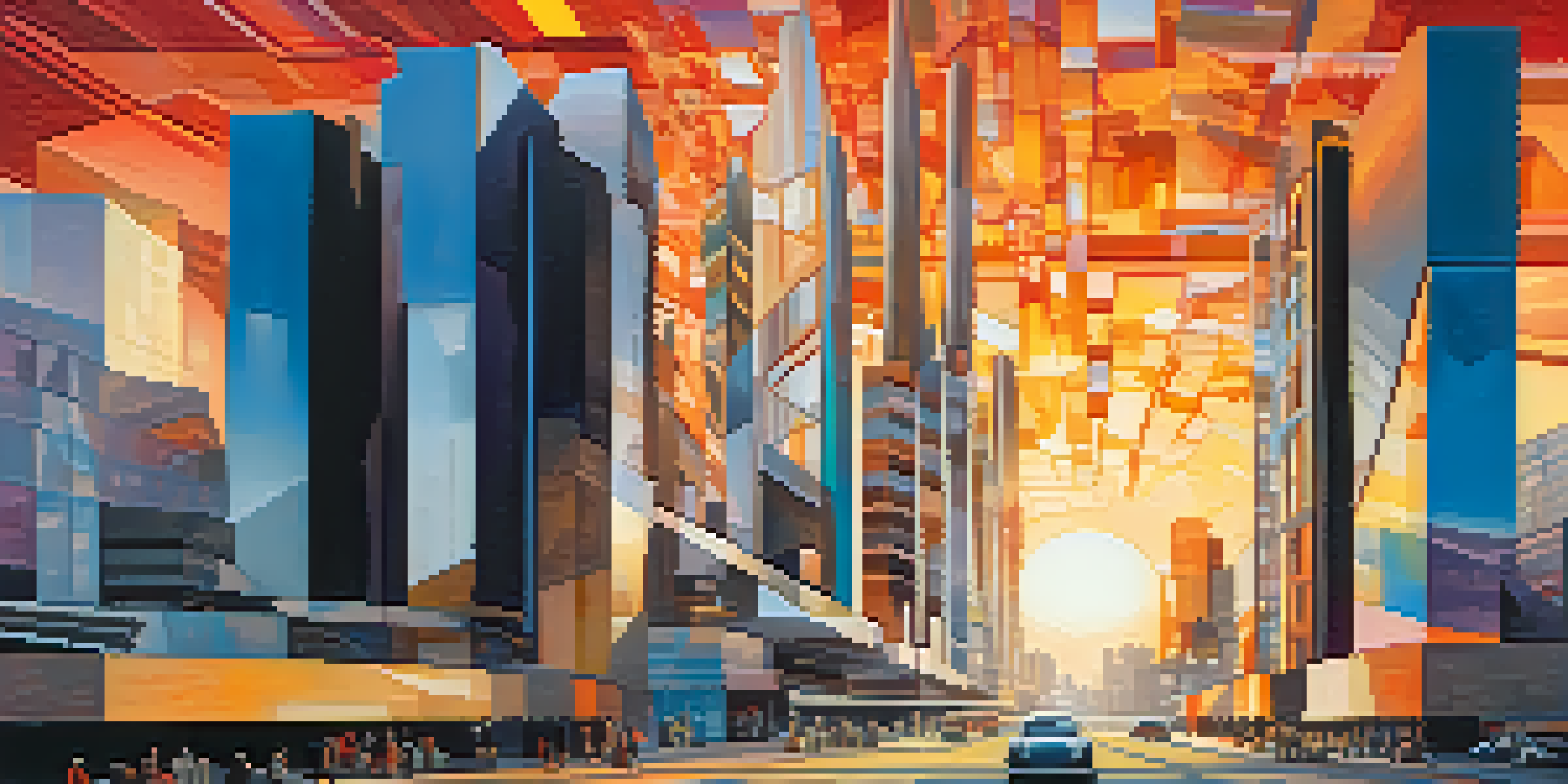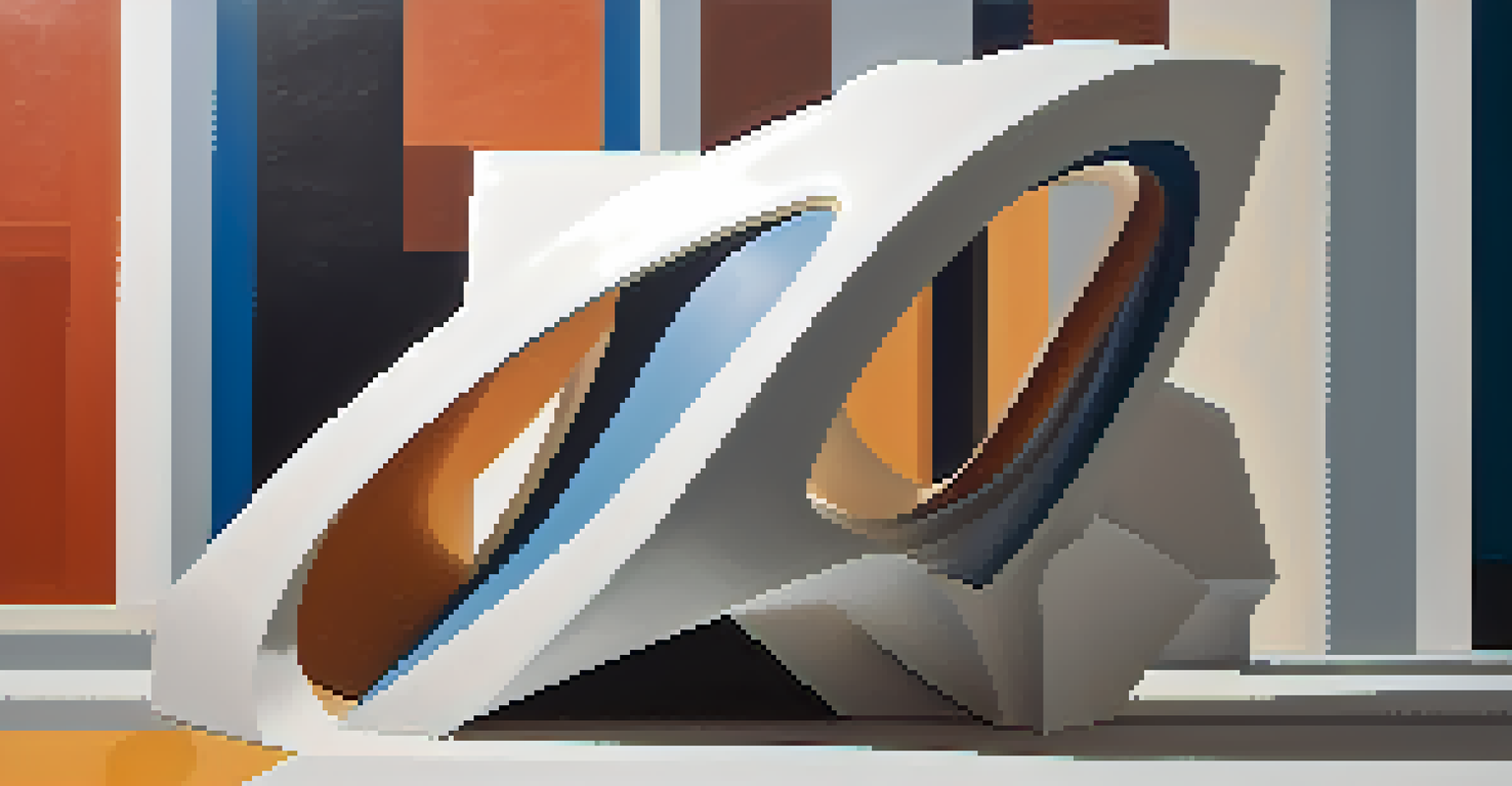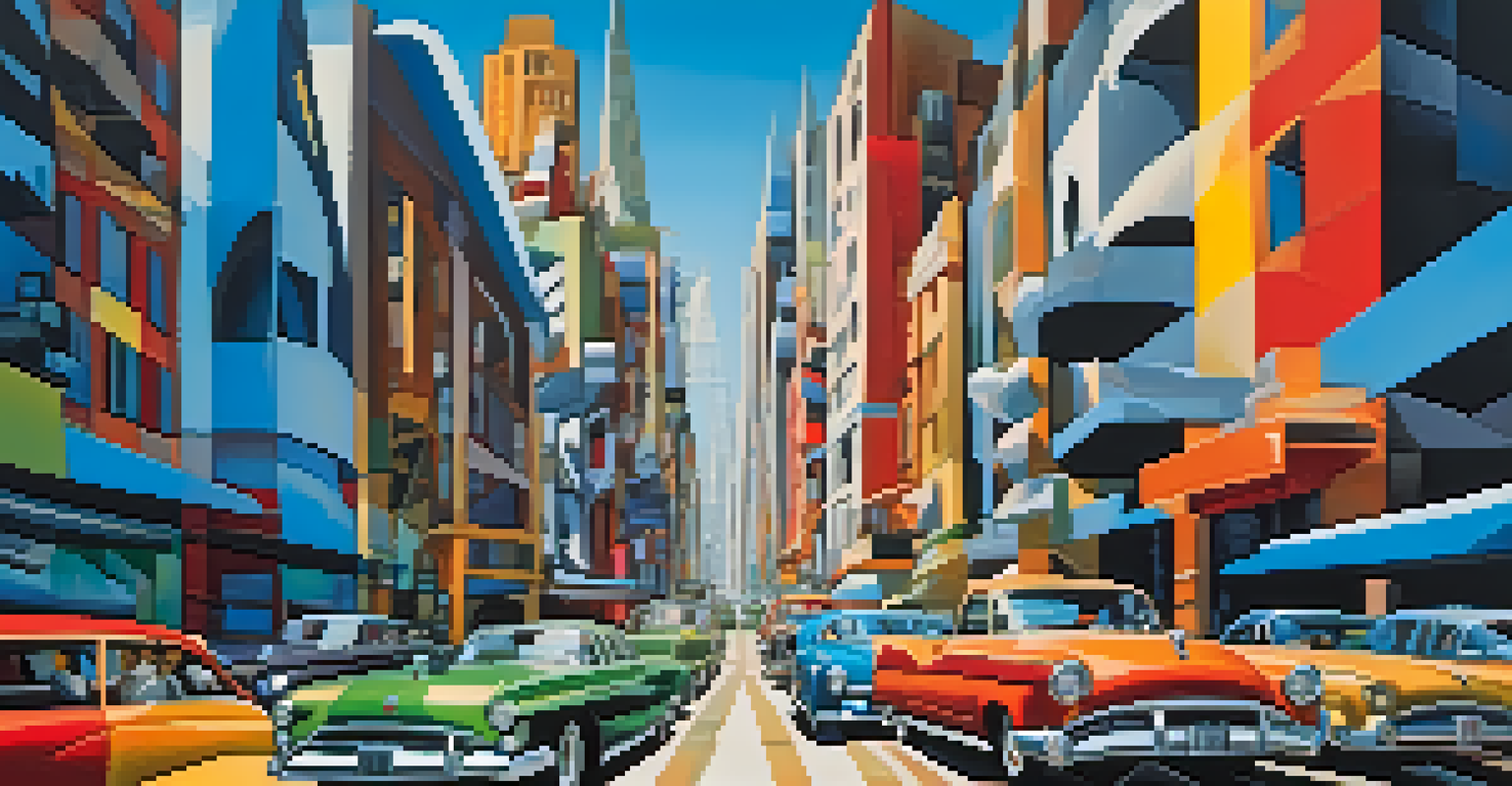Futurism’s Relationship with Cubism in Modern Art

Understanding the Roots of Futurism and Cubism
Futurism and Cubism emerged in the early 20th century, both challenging traditional artistic norms. Cubism, pioneered by artists like Pablo Picasso and Georges Braque, broke objects into geometric shapes, offering multiple perspectives in a single frame. In contrast, Futurism, founded in Italy, celebrated speed, technology, and dynamic movement, aiming to convey the energy of modern life.
Art is not an end in itself, but a means of addressing humanity.
While Cubism focused on form and structure, Futurism sought to express the vitality of the modern world, making the two movements seem quite different at first glance. However, both shared a desire to redefine art and explore new ways of seeing the world. This common ground laid the foundation for their eventual intersection.
The early 1900s were ripe for experimentation, with artists influenced by rapid industrialization and changing societal norms. This context encouraged the cross-pollination of ideas between Futurism and Cubism, leading to innovative artistic expressions. Understanding their roots helps us appreciate their complex relationship.
Key Principles of Cubism and Their Influence
Cubism's main principles revolved around abstraction and the fragmentation of forms. By deconstructing objects into geometric shapes, Cubist artists invited viewers to engage with multiple viewpoints simultaneously. This technique not only challenged perception but also laid the groundwork for later avant-garde movements, including Futurism.

One of the most significant impacts of Cubism on Futurism was its approach to abstraction. While Futurists embraced movement and the exhilaration of speed, they often employed Cubist techniques to depict these concepts. This blending of styles allowed Futurists to create artworks that felt alive and vibrant.
Futurism and Cubism's Shared Roots
Both movements emerged in the early 20th century, challenging traditional art and sharing a desire to redefine perception.
For instance, Futurist artists like Umberto Boccioni utilized Cubist fragmentation to convey motion and energy in their works. This innovative approach created a dynamic visual language that resonated with the Futurist ethos, further solidifying the interconnectedness of these two movements.
Futurism's Reaction to Cubist Techniques
Futurism did not merely adopt Cubist techniques; it actively reacted against them, seeking to push beyond static representation. While Cubists aimed to capture stillness and multiple perspectives, Futurists yearned to depict the thrill of movement and the chaos of modern life. This tension between the two movements fueled creativity and artistic experimentation.
The only way to escape the corruptible effect of praise is to go on working.
The Futurists' desire to portray speed and energy often led them to exaggerate forms and distort perspectives, contrasting with the more analytical approach of Cubism. They believed that art should embody the essence of the contemporary experience, capturing the fleeting moments of life. This fundamental difference in philosophy drove both movements to evolve.
Artists like Giacomo Balla and Fortunato Depero took inspiration from Cubism but infused their works with a sense of urgency and vitality. The result was a unique fusion that reflected the excitement of their time while still acknowledging the influence of Cubist principles.
The Visual Language of Futurism and Cubism
Both Futurism and Cubism developed distinctive visual languages, yet their expressions often overlapped. Futurist artists employed dynamic lines, bold colors, and fragmented forms to evoke a sense of motion, while Cubists used muted palettes and geometric shapes to explore depth and perspective. This interplay created a rich tapestry of modern art.
For example, Boccioni's 'Unique Forms of Continuity in Space' exemplifies how Futurism adopted Cubist techniques to create a sculpture that feels like it's in constant motion. The flowing lines and abstract forms reflect the artist's ambition to capture the essence of kinetic energy. Thus, the two movements influenced each other in profound ways.
Interconnected Visual Languages
Futurism and Cubism influenced each other through their distinct yet overlapping artistic expressions, creating dynamic and innovative artworks.
This visual dialogue highlights how artists borrowed from one another to forge new paths in modern art. The blending of Futurism's energetic aesthetics with Cubism's structured forms resulted in innovative artworks that challenged viewers' perceptions and expanded the possibilities of artistic expression.
Futurism and Cubism in Architectural Design
The relationship between Futurism and Cubism also extended to architectural design, where both movements sought to break away from traditional forms. Futurist architecture embraced modern materials like concrete and glass, reflecting speed and innovation. Cubist architects, on the other hand, focused on geometric shapes and abstract forms, challenging conventional building aesthetics.
This architectural dialogue resulted in structures that were not only functional but also visually striking. For instance, the work of Italian architect Antonio Sant'Elia showcased Futurist principles through bold, dynamic designs that embodied the energy of the urban landscape. His vision for future cities captured the essence of the movement.
Similarly, Cubist influences were evident in the works of architects like Jacques Lipchitz, who integrated abstract forms into his building designs. This cross-pollination of ideas in architecture demonstrated how both movements were interconnected, pushing the boundaries of creativity and redefining the built environment.
The Legacy of Futurism and Cubism Today
The legacy of Futurism and Cubism continues to resonate in contemporary art and design. Artists today still draw inspiration from the innovative approaches of these movements, exploring abstraction, fragmentation, and dynamic forms. This enduring influence speaks to the power of experimentation and the desire to push artistic boundaries.
Moreover, the themes of speed, technology, and modernity explored by Futurism are more relevant than ever in our fast-paced world. As we navigate the complexities of contemporary life, the lessons from these movements remind us of the importance of embracing change and innovation in artistic expression.
Legacy of Innovation in Art
The enduring impact of Futurism and Cubism continues to inspire contemporary artists to explore abstraction and dynamic forms in their work.
Exhibitions showcasing works influenced by Futurism and Cubism often highlight their interconnectedness, inviting viewers to appreciate this rich artistic dialogue. By understanding their legacy, we can continue to explore new ways of seeing and interpreting the world around us.
Conclusion: The Symbiotic Relationship of Two Movements
In conclusion, the relationship between Futurism and Cubism is a fascinating study of artistic evolution. While they emerged as distinct movements, their shared desire to redefine art and challenge perceptions led to a dynamic interplay of ideas and techniques. This symbiotic relationship enriched the modern art landscape, paving the way for future innovations.
As we reflect on their contributions, it's essential to recognize how both movements influenced not only each other but also the broader art world. Their legacy serves as a reminder of the importance of collaboration and exploration in creative endeavors.

Ultimately, the dialogue between Futurism and Cubism exemplifies the beauty of artistic experimentation, reminding us that great art often arises from the fusion of diverse ideas and perspectives.